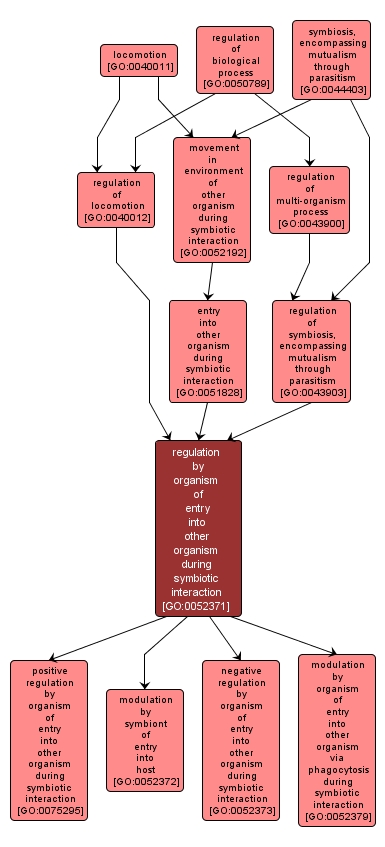GO TERM SUMMARY
|
| Name: |
regulation by organism of entry into other organism during symbiotic interaction |
| Acc: |
GO:0052371 |
| Aspect: |
Biological Process |
| Desc: |
Any process by which an organism modulates the frequency, rate or extent to which it enters into a second organism, where the two organisms are in a symbiotic interaction. |
Synonyms:
- modulation by organism of entry into other organism during symbiotic interaction
|
|

|
INTERACTIVE GO GRAPH
|














